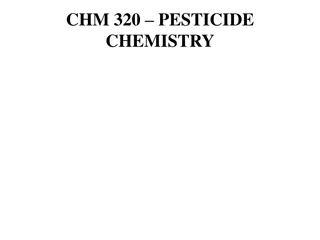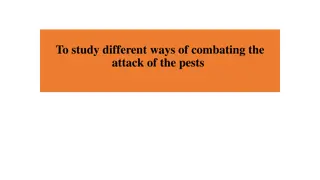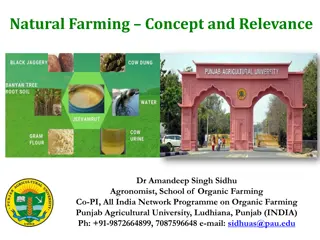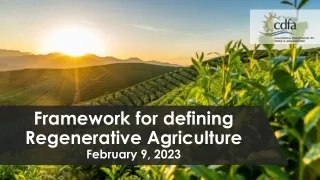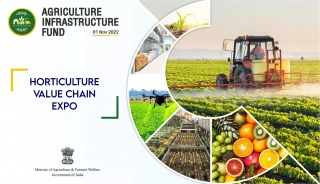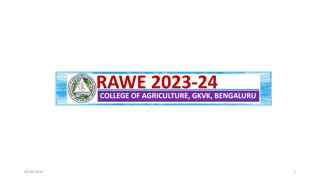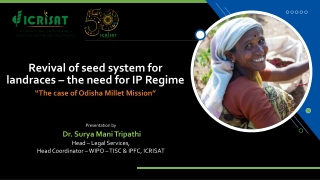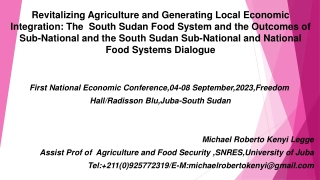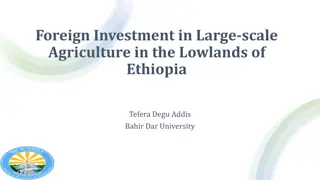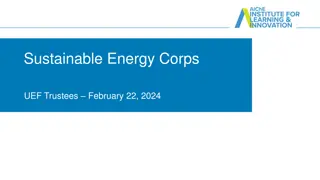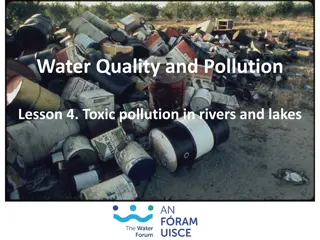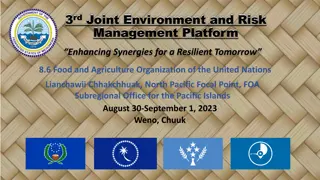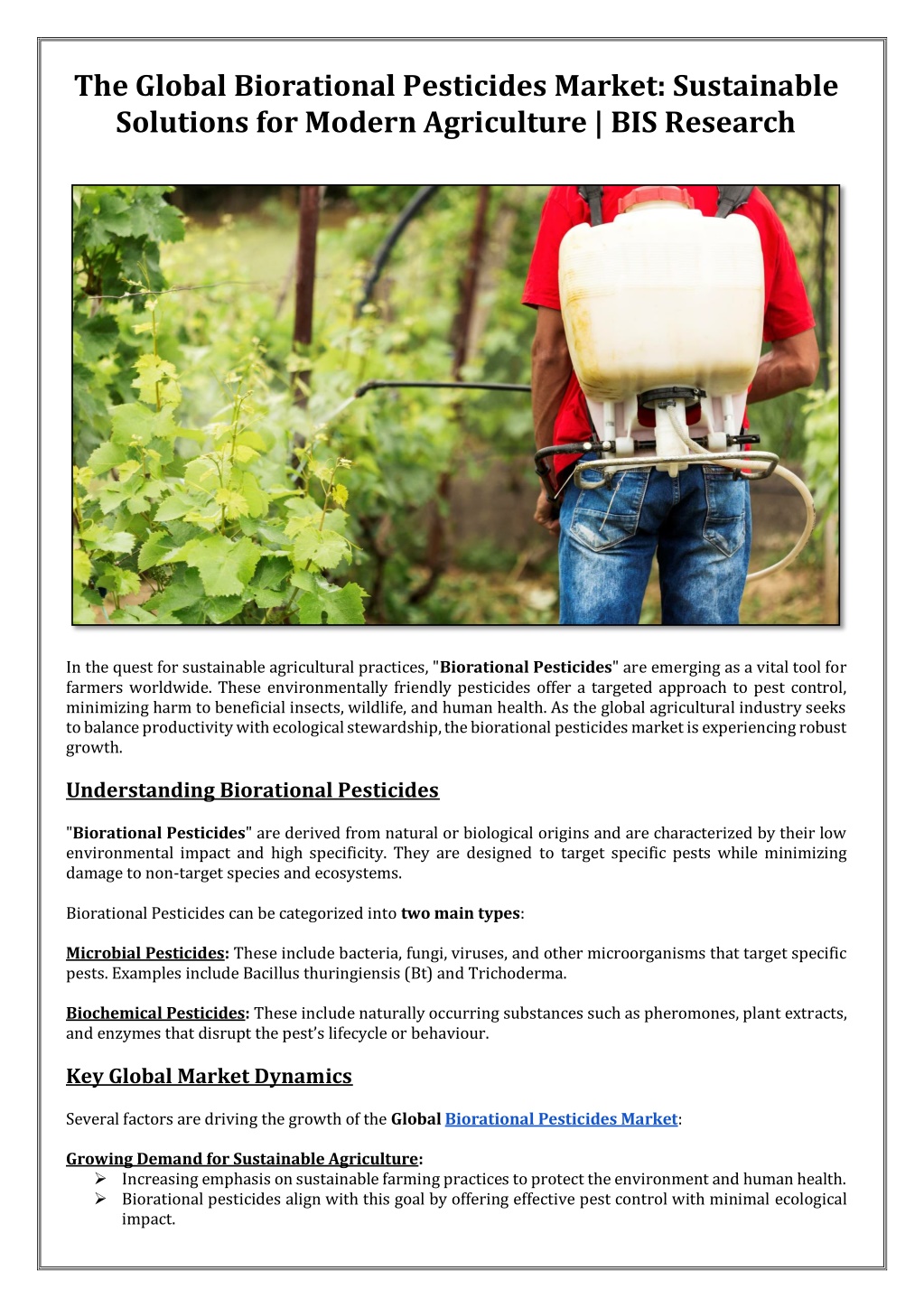
Global Biorational Pesticides Market: Sustainable Solution in Modern Agriculture
The Global Biorational Pesticides Market is experiencing significant growth as agricultural practices shift towards sustainable and environmentally friendly solutions. Biorational pesticides are a category of pest management products derived from natural materials, such as plants, microorganisms, and biochemicals.
- Biorational Pesticides Market
- Biorational Pesticides Market Report
- Biorational Pesticides Market Research
- Biorational Pesticides Market Forecast
- Biorational Pesticides Market Analysis
- Agriculture
- BIS Research
Uploaded on | 0 Views
Download Presentation
Please find below an Image/Link to download the presentation.
The content on the website is provided AS IS for your information and personal use only. It may not be sold, licensed, or shared on other websites without obtaining consent from the author. Download presentation by click this link. If you encounter any issues during the download, it is possible that the publisher has removed the file from their server.
Presentation Transcript
The Global Biorational Pesticides Market: Sustainable Solutions for Modern Agriculture | BIS Research In the quest for sustainable agricultural practices, "Biorational Pesticides" are emerging as a vital tool for farmers worldwide. These environmentally friendly pesticides offer a targeted approach to pest control, minimizing harm to beneficial insects, wildlife, and human health. As the global agricultural industry seeks to balance productivity with ecological stewardship, the biorational pesticides market is experiencing robust growth. Understanding Biorational Pesticides "Biorational Pesticides" are derived from natural or biological origins and are characterized by their low environmental impact and high specificity. They are designed to target specific pests while minimizing damage to non-target species and ecosystems. Biorational Pesticides can be categorized into two main types: Microbial Pesticides: These include bacteria, fungi, viruses, and other microorganisms that target specific pests. Examples include Bacillus thuringiensis (Bt) and Trichoderma. Biochemical Pesticides: These include naturally occurring substances such as pheromones, plant extracts, and enzymes that disrupt the pest s lifecycle or behaviour. Key Global Market Dynamics Several factors are driving the growth of the Global Biorational Pesticides Market: Growing Demand for Sustainable Agriculture: Increasing emphasis on sustainable farming practices to protect the environment and human health. Biorational pesticides align with this goal by offering effective pest control with minimal ecological impact.
Regulatory Support: Governments and regulatory bodies worldwide are promoting the use of biorational pesticides. Favourable policies and subsidies recognize their role in reducing the environmental footprint of agriculture. Consumer Awareness: Rising consumer awareness about the health and environmental impacts of conventional pesticides. Driving demand for organically grown produce, which boosts the adoption of biorational pesticides. Technological Advancements: Innovations in biotechnology and integrated pest management (IPM) systems. Enhancing the efficacy and adoption of biorational pesticides. Pest Resistance: Increasing resistance of pests to conventional chemical pesticides. Pushing farmers to seek alternative solutions, making biorational pesticides a preferred choice. Global Biorational Pesticides Market Segmentation Segmentation by Source: Botanical Microbials Non-Organic Others Segmentation by Type: Biorational Insecticides Biorational Fungicides Biorational Nematicides Biorational Herbicides Others Segmentation by Crop Type: Fruits and Vegetables Cereals and Grains Oil Seeds and Pulses Others Gain the competitive edge with BIS Research. Request for a FREE Sample Report on Biorational Pesticides Market Research. Key Market Challenges and Opportunities While the global market of biorational pesticides presents substantial opportunities, it also faces several challenges: High Cost: Biorational pesticides can be more expensive than conventional chemical pesticides, which may limit their adoption among cost-conscious farmers. Limited Awareness: In some regions, there is a lack of awareness and understanding among farmers about the benefits and proper use of biorational pesticides. Regulatory Hurdles: Navigating the regulatory landscape for the approval and commercialization of new biorational pesticides can be complex and time-consuming. Shelf Life and Stability: Some biorational pesticides have shorter shelf lives and stability issues compared to chemical pesticides, posing challenges in storage and distribution.
Conversely, the market presents numerous opportunities: Technological Innovation: Advances in biotechnology, formulation technologies, and delivery systems are enhancing the effectiveness and accessibility of biorational pesticides. Expansion in Emerging Markets: Improving agricultural practices and rising awareness in emerging markets present significant growth opportunities for biorational pesticides. Integration with IPM: The growing adoption of integrated pest management (IPM) systems, which combine multiple pest control methods, is driving demand for biorational pesticides. Sustainability Initiatives: Increasing focus on sustainability initiatives and organic farming practices will further boost the adoption of biorational pesticides. Consolidated Summary The Global Biorational Pesticides Industry is poised for significant growth, driven by the increasing demand for sustainable agriculture, regulatory support, rising consumer awareness, technological advancements, and the need to combat pest resistance. By addressing challenges related to cost, awareness, regulatory compliance, and product stability, and leveraging opportunities in technological innovation, emerging markets, and sustainability initiatives, the potential of biorational pesticides in transforming modern agriculture can be fully realized. This market not only supports higher agricultural yields but also contributes to the overall sustainability and ecological health of farming practices worldwide.





